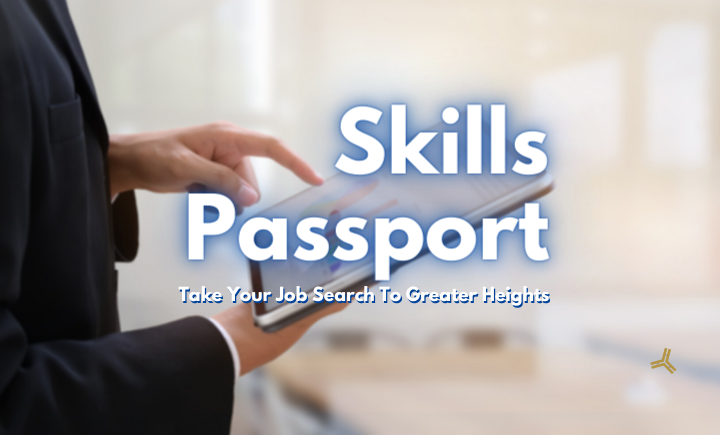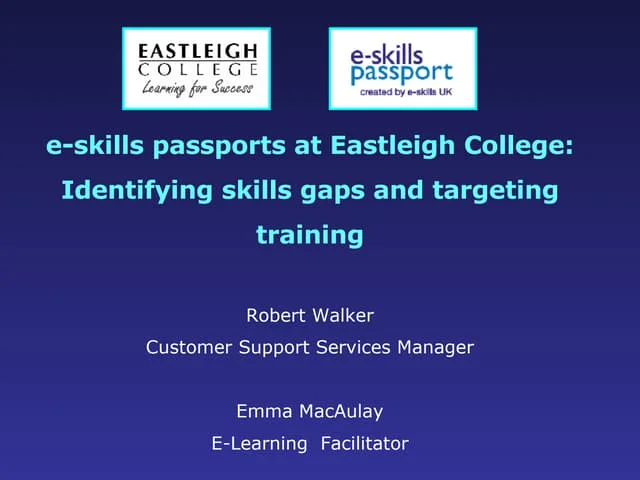Managing a team in today’s fast-changing digital environment is no easy task. With new tools, frameworks, and technologies emerging constantly, keeping employees skilled and productive requires more than just occasional training sessions. Training managers need a structured, measurable approach to track progress and align employee development with business goals.
That’s where a skills passport comes in. By providing a central hub for recording, assessing, and tracking employee skills, skills passports empower training managers to improve team performance in a strategic way.
What Is a Skills Passport?
A skills passport is a digital system that records an individual’s existing abilities, qualifications, and progress toward new skills. For organisations, it provides:
-
Visibility: A clear overview of employee skills.
-
Measurement: Tools to track strengths and identify gaps.
-
Planning: A roadmap for development, certifications, and training.
-
Evidence: Documented proof of skills for compliance and audits.
Why Training Managers Should Use Skills Passports
1. Identify Team-Wide Skill Gaps
Instead of guessing what training is needed, managers can run assessments to see exactly where teams fall short. For example, if a department struggles with cloud computing knowledge, training can be tailored accordingly.
2. Streamline Training Investments
With limited budgets, it’s critical to invest only where it matters most. Skills passports highlight priority areas so organisations avoid wasting money on irrelevant courses.
3. Enhance Employee Engagement
Employees are more motivated when they see personal growth. A skills passport lets them track progress and celebrate achievements, creating a sense of ownership in their development.
4. Improve Team Performance
By aligning training with real skill gaps, teams become more efficient, productive, and adaptable. Stronger teams directly contribute to improved business results.
5. Support Workforce Planning
Skills passports make it easier to match employees to projects based on proven abilities. They also help managers forecast future staffing needs as technologies and roles evolve.
Best Practices for Training Managers Using Skills Passports
-
Conduct Regular Assessments
Schedule evaluations at least annually to keep skill data accurate and up to date. -
Align Training With Business Goals
Always link employee development to strategic objectives, whether that’s improving cybersecurity resilience, adopting new cloud systems, or streamlining operations. -
Encourage Employee Participation
Involve team members in self-assessment and goal-setting to increase engagement. -
Integrate With Learning Platforms
Connect the skills passport to online courses, internal training, and certifications so progress updates automatically. -
Measure Impact
Track not just skills, but also performance outcomes—reduced errors, faster project completion, or higher customer satisfaction.
Example in Action
A software company wants to transition its team from traditional servers to cloud infrastructure:
-
Step 1: Training manager uses the skills passport to assess cloud-related knowledge.
-
Step 2: Gap analysis reveals most employees lack AWS and Azure expertise.
-
Step 3: Manager builds a targeted training plan with AWS certification courses.
-
Step 4: Employees update their skills passports with progress and certifications.
-
Step 5: Within a year, the company successfully migrates to the cloud with a skilled, confident team.
Conclusion
For training managers, skills passports are more than just a tool—they’re a strategy for driving measurable performance improvement. By identifying gaps, tailoring training, and tracking progress, managers can build stronger, more adaptable teams ready to face future challenges.
Investing in a skills passport today ensures your workforce is not only skilled for today’s needs but also prepared for tomorrow’s opportunities.

